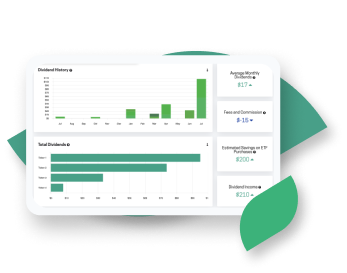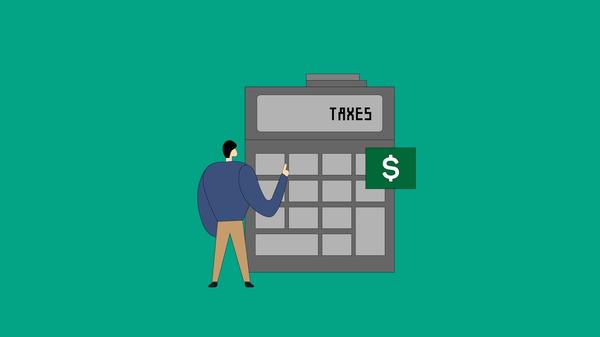Investment shortcuts are not literal shortcuts - a way to get rich quick. There is no such thing as an investing shortcut to growing your wealth. Luckily, there are a lot of investment shortcuts as a way of simplifying complex calculations.
In this article we are going to take a look at how to use an investment shortcut to calculate realistic investing gains in 6 steps.
But first...
Why You Will Love Shortcuts
Shortcuts are very useful because they allow you to think on the spot. For example, let's say you're in a meeting, and someone tells you an investment has doubled in 10 years. One shortcut is called the Rule of 70, which you can use to determine how long it will take to double an investment. Let's say you expect a return of 7% per year on your investments. Then, 70/7 = 10, so it'll take approximately 10 years for your investments to double.
What's neat about many shortcuts is if you flip the equation around, you can determine the other pieces, such as if you flipped the Rule of 70 to determine the rate of return:
70/10 years = 7% return per year.
You will also love shortcuts because they allow you to double-check complicated models. When you create a complicated spreadsheet (use Passiv instead), there's a good chance something's wrong in the calculation somewhere. Using short cuts allows you to anticipate what the end number should be, so that if the spreadsheet is way off, you can throw up a red flag.
Which is why you'll love...
The Investment Gain Shortcut
Step 1 - Inflation
First of all, let's establish that we're working in an inflation adjusted world.
Let's assume that inflation isn't what it has been lately, but the inflation is 3% per year, which is the historic average for the past 100 years.
That means that for example, $4,120 tomorrow is worth $4,000 in today's money. By working on an inflation adjusted world, we're thinking of everything in strictly "today's money".
Bring that number into the next step.
Step 2 - Total Contribution
Assume you'll save the same amount every year, inflation adjusted.
In this example, assume the annual savings will be $4,000 per year.
Again, if you don't adjust for inflation, it'll be $4,000 this year, $4,120 next year, and so forth. But in an inflation adjusted world, it'll be $4,000/year every year.
Then, multiply that number by the number of years you'll save, and that gives you how much you'll have contributed to your savings. Let's say we're saving for retirement, so we're going to be saving for a while, 40 years:
40 years x $4,000 contributed per year = $160,000.
Bring that number into the next step.
Step 2b - Retirement Spending
Now for the purpose of this exercise, we are going to assume you are saving for is retirement. You may not need to do this supplemental step in most investment gain calculations, but it's helpful here to see your investing gains against a specific spending goal.
In retirement, you'll spend the same amount every year, inflation adjusted.
In this example, we assume the annual withdrawal will be $50,000 per year for a withdrawal period of 20 years.
Here again, multiply that number by the number of years you'll withdraw your money from:
20 years x $50,000 spending = $1,000,000.
What do the numbers in Step 2 tell us? They tells us that you've contributed $160,000 from your income, and you'll be withdrawing $1,000,000 from your savings. All numbers are inflation adjusted.
The difference, $840,000 of it, will have to be made up from investment gains.
Set that number aside.
Step 3 - Average Duration of Investment
Now we want to know how many years, on average, your contributions will be allowed to grow for you.
Remember, you are contributing for 40 years, after which you will be withdrawing for 20 years. During those 20 years of withdrawing, a portion of your money remains invested and accruing interest. - we want to know what the average duration a dollar will be invested and growing. We'll see why later.
First, we need to determine two numbers: the midpoint of your saving period and the midpoint of your withdrawing period. Divide the period
40 years / 2 = 20 years
To find the midpoint of the year of withdrawal:
20 years / 2 = 10 years
Add these two numbers together and you'll get the average time that a saving is allowed to grow: 30 years.
Set that number aside.
Step 4 - Inflation Adjusted Rate of Return
Calculate the inflation adjusted rate of return on investments. Assume a generous 8% per year before inflation in the example.
Now remember we said the inflation would remain the 100-year historical average? That was 3% per year.
So to calculate the rate of return after inflation number, you simply deduct the inflation rate from the rate of return we assumed above:
8% rate of return - 3% inflation = 5% inflation adjusted rate of return per year.
Bring that number to the next step.
Step 5 - Doubling The Investment
Use the Rule of 70 to figure out how long it would take an investment to double using the rate of return on investments.
Remember: the Rule of 70 states that if you divide 70 by the percentage returns, the result is approximately how long it takes to double your investment.
In our example, we take the inflation adjusted rate of return we calculated above:
70 / 5 = 14 years.
You can use this number to figure out how much your investments will likely gain, by dividing the average investment time by the number of years it takes to double your investments.
30 / 14 = 2
That means at 5% per year rate of return, our investments will double twice, and gain a bit more. Doubling twice gives us 4, so round up and we can comfortably say our investment will grow to 5 times the original amount.
Step 6 - Your Total Investment Gain
Now let's finish. Multiply to figure out how much your savings will grow to.
Take the $160,000 from Step 2 (the sum of your contributions), multiply it by the number 5 from Step 6 (the investment multiplier):
160,000 x 5 = $800,000 total savings
Now simply subtract your contributions from your total savings:
800,000 - 160,000 = $640,000 total investment gain
So we have learned that we will gain $640,000 or 4 times your total contributions (640,000 / 160,000 = 4).
But wait, didn't we conclude that we'd need $840,000 in investment gains? With only $640,000, we fall far short. In this example, you would have realized you wouldn't been putting away enough.

Set Up Goals and Knock 'Em Down
Use Passiv's Goals to calculate investment gain. If you have plans for your investments, choose them as goals and run what-if scenarios to understand how to reach your goals faster.
Get StartedThe Full Calculation
Whenever you use a short cut, you should ask yourself - how accurate is it?
That's when you should take a minute to do the full calculation.
In this instance, when you adjust for inflation, investment gain is about $664,000, or about 4.15 times your total savings.
4.15 is pretty close to the 4 we calculated using the shortcut. In other words, the shortcut proved to be pretty accurate.
Now, there are ways to make this 4.15 ratio go higher. If you adjust inflation down to just 2% per year, the ratio goes up to 6.6. Or, if you assume a higher rate of return - say 9% - then the ratio goes up to 8.2.
Of course, there are plenty of reasons why 4.15 might be an overestimate as well. If you adjust your investment rate of return down to 7% per year, the ratio goes down to under 2!
You can play around all you want, but the shortcut saves you time and gets you pretty close.
Conclusion
Perhaps this 'shortcut' doesn't look much like a shortcut for many of you. But do it often enough and it becomes as easy as a simple calculation like cross, multiply and divide. It can be used for retirement, a major purchase, or any investment planning goals.
Using shortcuts like this can greatly improve your investing knowledge but simplifying basic calculations


